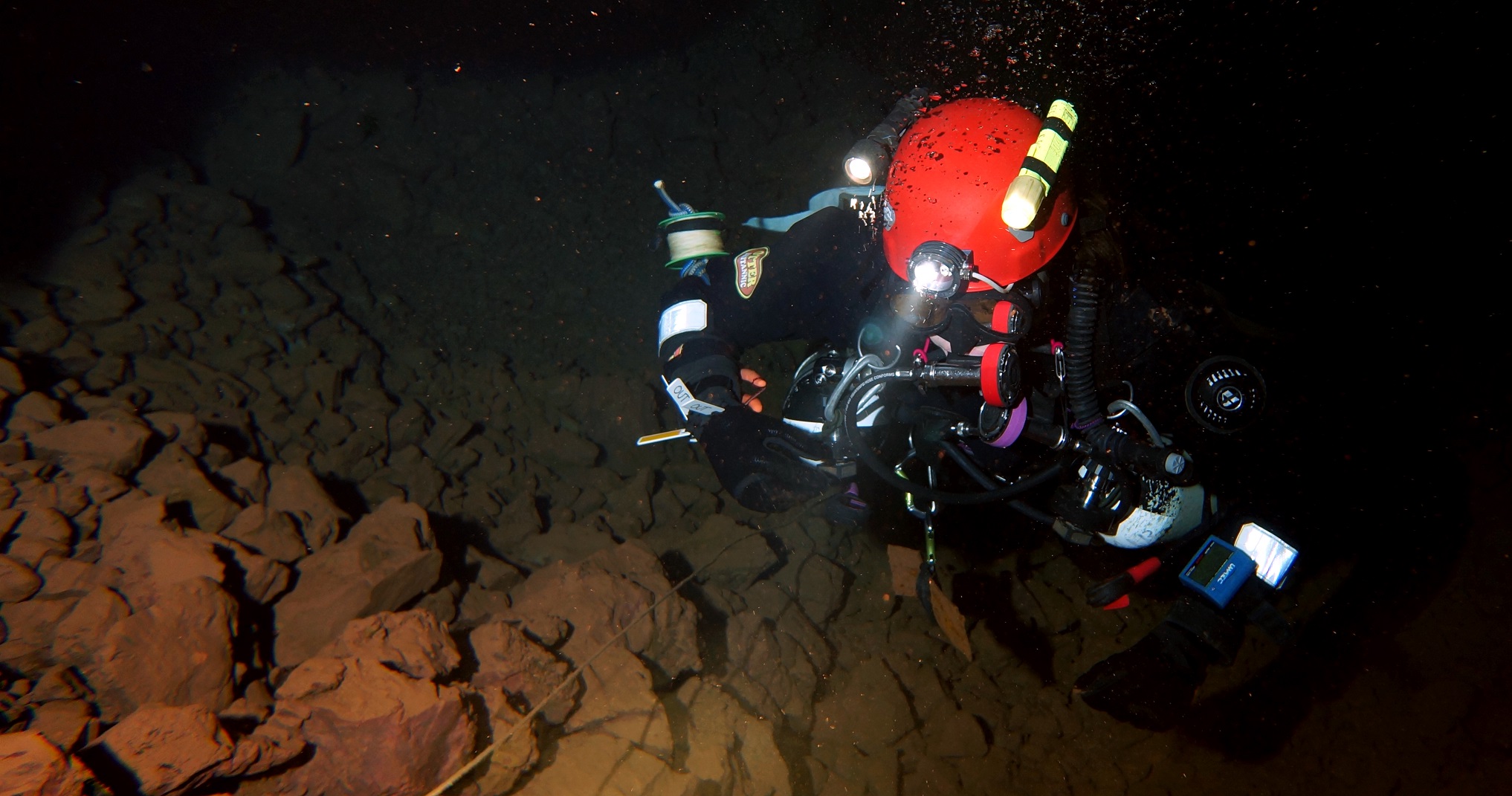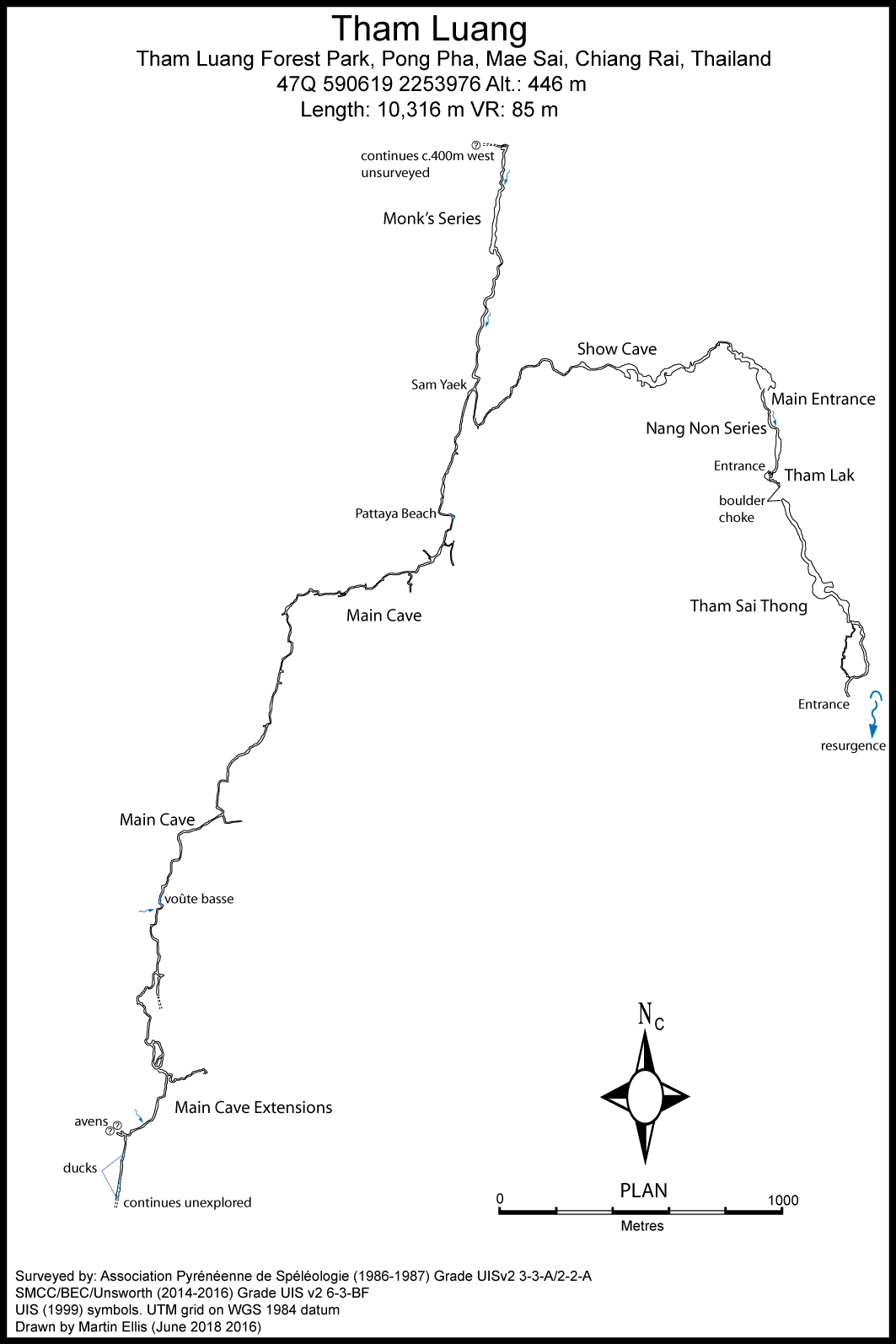
It’s probably fair to say that people across the world, not just cavers, are breathing one the largest collective sighs of relief for many years as the regional governor, Narongsak Osottanakorn, breaks the news that twelve boys aged 11 to 16 and their 25 year old coach, all members of the Wild Boar soccer team, have been found alive and safe in the Tham Luang cave in the Chiang Rai region of Thailand.
Diving operations resumed over the weekend after monsoon rains eased and pumping operations began to take effect, with a divers camp established around 3km into the 10km cave.
In the largest cave rescue ever mounted, over a thousand personal from the Royal Thai Navy and Army, Police, civilian volunteers, as well as overseas teams including UK cave divers and specialists from many other countries have spent the last nine days searching the area around the cave for possible back door entrances, installing pumps both to divert floodwater upstream and increase drainage downstream as well as in the cave itself to lower water levels. To get an idea of the scale of the rescue over six hundred dive cylinders have been readied and transported to the cave and over forty pumps have been in action, the largest capable of moving 7200 cubic metres an hour.
The faith, determination and enormous effort of the rescue services, local people and families have paid off. The boys are reported as having been found around 400m beyond the Pattaya beach section of the cave, although this hasn’t been confirmed.
The next stage in the rescue will be to get supplies, shelter and either fresh water or water purification tablets to the thirteen as well as medical assistance. Higher rainfall is predicted from Wednesday so this will give added urgency to the supply mission.
Whilst that happens thoughts will turn to how to safely extract the boys from the cave. There are several ways this could be done.
Potentially a combination of drilling to drain the system and diverting water upstream of the cave could reduce water levels to the point where they could return using the passages they entered through if a long enough clear spell in the weather breaks in the next few weeks.
Theoretically teaching the boys to dive and the diving the team out one by one through the four long sumps is an option, but given the conditions this approach seem unlikely. The narrow passages and high currents have already tested cave divers and Navy Seal divers
The search for a back door to the cave will continue, but past experience suggests this is no easy way forward. Time, effort and patience will be needed. Cavers who have sought back door entrances to known caves will confirm that even with radio location an element of luck is needed.
Perhaps the best news is that borehole drilling, not really possible so far as the survey isn’t sufficiently accurate, could now be an option.
Both digging and drilling operations will be helped if divers are able to place transponders in areas of the cave thought to be nearer the surface allowing passages could be radiolocated, and test boreholes started. The 2010 Copiapo mining rescue in Chile involved drilling a 700m rescue shaft, after initial borehole drilling successfully entered the chamber the miners were trapped in although the rescue took 69 days.
(Editors note 3/7/18 – the latest briefing from the BCRC suggests drilling would be much more difficult than this, with the distances involved possibly greater than in the Chile rescue)

